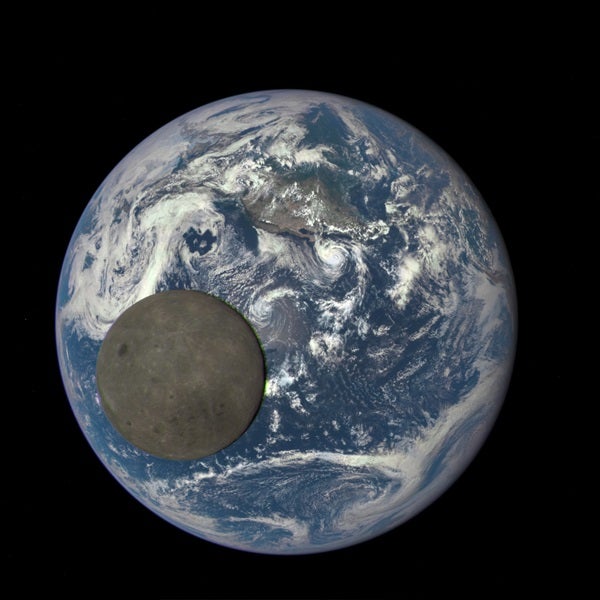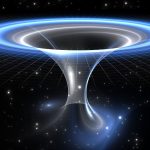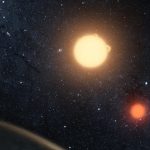Key Takeaways:
-
The hypothesis suggests conditions necessary for complex life to arise, like on Earth, are uncommon in the universe.
-
Many factors like a stable sun, presence of water, and a large moon contribute to Earth’s suitability for complex life.
-
The hypothesis focuses on complex life, not simple life like microbes, which may be common.
-
Scientists should focus on finding atmospheric signs like oxygen and chlorophyll, which might indicate complex life on other planets.
-
The Rare Earth Hypothesis is still being debated, with some scientists questioning the necessity of certain factors like Jupiter’s role.
Pioneer 4 was the first spacecraft to travel beyond Earth’s orbit in 1959. The Search for Extraterrestrial Intelligence (SETI), established in 1984 by astronomers Carl Sagan and Jill Tarter, has been searching the universe for indications of extraterrestrial life for 25 years.
However, neither an international armada of robotic spacecraft nor scientists searching for extraterrestrial life have discovered any proof of such life to date. Indeed, while our exploration of the solar system has been nothing short of staggering in terms of the images and scientific data obtained, the worlds we’ve visited beyond Earth all appear to be completely sterile.
Even the most committed SETI researcher would have to accept that, at least thus far, we have encountered an uncomfortable stony silence in our search for extraterrestrial life. However, why?
The Rare Earth hypothesis
A book written in 2000 by researchers Peter Ward and Donald Brownlee provided a theory regarding the apparent separation of our species. Rare Earth: Why Complex Life is Uncommon in the Universe is the title of the book (Copernicus Books, 2000). With the help of astronomer Brownlee and paleontologist Ward, they developed what is now known as the Rare Earth hypothesis.
Simply stated, the Rare Earth hypothesis suggests that the very unique conditions of Earth that allowed complex life to arise and flourish are exceptionally uncommon — and they’re unlikely to widely occur throughout the universe.
Ward and Brownlee proposed that our extremely stable and hospitable ecosystem is the result of numerous fortunate aspects of Earth, the Sun, and the solar system. Some of these properties had previously been discussed extensively in astronomy circles, while others had received very little attention.
The theory known as the “Rare Earth hypothesis” focuses on different aspects of Earth and its surroundings that contributed to the development of complex life. Among the essential elements that Ward and Brownlee believed were essential to the development of complex life were:
A planet that exists in a favorable part of the right kind of galaxy, where significant amounts of heavy elements are available and sterilizing radiation sources are located far away.
- an orbit around a star with a long lifetime (billions of years) and little UV radiation emission.
- a distance in orbit that permits liquid water to exist on the planet’s surface or close to it.
- An orbital distance that is far enough away to prevent the planet from becoming tidally locked to its host star.
- an orbit around its host star that remains steady over cosmic timescales.
- a planetary tilt that permits moderate, not extreme, seasonal variations in the atmosphere.
- A solar system with gas giants that can keep debris out of the inner solar system, decreasing the likelihood of significant cosmic impacts and the ensuing mass extinctions.
- a planet with a mass big enough to support liquid oceans and preserve its atmosphere.
- A moon large enough to help stabilize the tilt of the planet’s axis.
- a planetary core that is molten and produces a strong magnetic field that shields the surface from solar radiation.
For complex life to use oxygen, it must be present and in the proper amount at the right time.
The existence of plate tectonics prevents a runaway greenhouse effect, builds up land masses, produces a variety of ecosystems, cycles carbon into and out of the atmosphere, and helps stabilize the surface temperature worldwide.
Could we really be alone?
In the two decades since this book was published, interest in these ideas has only grown. Astronomy spoke with Ward and Brownlee about the Rare Earth hypothesis last year. During those conversations, Ward recounted how the whole concept of the Rare Earth hypothesis spawned from a movie-based chat with Brownlee.
“We were just talking about how ridiculous the Star Wars bar room scene was,” said Ward.
“That’s how it all started. Look at all those aliens! You know, I just think [the notion of aliens everywhere] has been foisted on the public.”
Ward and Brownlee challenged many widely held notions that supported the idea that complex life is out there waiting to be found. For instance, despite astronomer Carl Sagan’s frequent assertions to the contrary, between 80 and 95 percent of stars differ significantly from our own in terms of size, mass, luminosity, lifespan, and a host of other factors.
Furthermore, prior researchers who had attempted to answer the question of why life on Earth was so plentiful yet so rare in the universe had not included plate tectonics in their thinking at all. In fact, the subject is covered in detail in an entire chapter of Rare Earth, which goes to great lengths to explain how plate tectonics shaped Earth into a favorable environment for life. To the best of our knowledge, plate tectonics is active on Earth alone among solar systems. Not only that, but there are a ton of other characteristics of our habitable planet that we haven’t seen duplicated anywhere else in the universe.

Does simple life count?
It’s critical to keep in mind that the Rare Earth hypothesis only addresses the origins of sophisticated life. Since microbes can survive in even the most hostile environments on Earth, Ward and Brownlee believe that simple life forms, such as bacteria, are common throughout the cosmos. However, the pair feel that complex life, metazoans like animals and us, are exceptionally rare.
“If you find life elsewhere, it’s likely to be microbial,” said Brownlee. “You know, Earth will live for about 12 billion years, but metazoans can only survive in a far smaller range of environmental conditions than bacteria can.” That means that a planet’s environment is conducive to simple life for much longer than it is conducive to complex life.
“Probably only 10 or 20 percent of Earth’s lifespan is spent in the atmosphere where oxygen is present, providing carbon dioxide for plants and oxygen for metazoans. So, if you just landed on our planet randomly throughout its entire history, you would not have anything to see.”
Counter-evidence welcome
It doesn’t follow that Ward and Brownlee don’t want complex life to be found, even though they don’t think it’s common throughout the universe. The pair is excited about new data from cutting-edge observatories such as the James Webb Space Telescope (JWST), which aims to provide a detailed picture of exoplanet atmospheres. Furthermore, some atmospheric signatures would provide more information than others.
“I think is way more important to try to look for oxygen atmospheres, but also look for reflections that indicate chlorophyll. Only a few methods will be available to you to construct particular molecules,” Ward said. “It really does come back to the fact that, as [University of Washington planetary scientist] David Catling has said, any animal equivalent is going to have to need oxygen — a lot of it. It is impossible for there to be rapidly moving and thinking organisms, which are also forms of movement, without atmospheric oxygen. There won’t be any people on carbon dioxide out there, he continued.
While compelling, the Rare Earth hypothesis still has its detractors; many of the environmental factors Ward and Brownlee identified in their book have come under fire over the past 20 years. Among the most frequently attacked proposed conditions for complex life is that a large planet like Jupiter is required to keep the inner solar system relatively free of dangerous debris. According to some scientists, these planets may even make planetary impacts more common. The suggested requirements of plate tectonics and a global magnetic field have drawn criticism from other critics.
With regard to these criticisms, Ward is understanding, encouraging challenges to his ideas. “Good science does a couple of things,” he says,”but the most important thing it does is it stimulates other science; good science makes people angry. It makes some people angry enough that they go out and do something about it.”
The Rare Earth hypothesis remains unproven, but it is hard to ignore the plethora of data that Ward and Brownlee have compiled to support their case. The barren and stark surfaces of Mercury, Venus, and Mars all serve as nearby reminders of what a lucky paradise Earth is by comparison. Whether it’s uncommon or not, it’s our only house.


